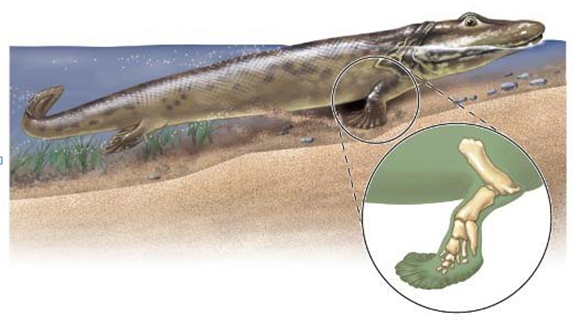The forelimbs of Tiktaalik have bones, but are fringed with fins instead of toes (see figure). Which of the following is the best explanation for this observation?

A. This species was an evolutionary dead end, which is why no modern species have both bones and fins on their forelimbs.
B. This is a common ancestor to all of the modern fish species that have bones in their forelimbs.
C. This is a transitional fossil, and the species has not yet lost its fins.
D. This is a common ancestor to all of the modern amphibian species that have fins on their forelimb.
E. This is a transitional fossil, and the species has not yet lost its arm bones.
C. This is a transitional fossil, and the species has not yet lost its fins.
You might also like to view...
Which of the following lists the structures of the male reproductive tract in the proper order from sperm production to ejaculation?
A. seminiferous tubules, epididymis, vas deferens, ejaculatory duct, urethra B. seminal vesicles, vas deferens, prostate, urethra, ejaculatory duct C. vas deferens, epididymis, seminiferous tubules, ejaculatory duct, urethra D. vas deferens epididymis, seminal vesicles, ejaculatory duct, urethra E. epididymis, seminiferous tubules, ejaculatory duct, vas deferens, urethra
The idea that evolution proceeds with long periods of stasis with relatively brief bursts of fast evolutionary change is called
A. catastrophism. B. temporal equilibrium. C. gradualism. D. punctuated equilibrium. E. temporal isolation.
Polyploid organisms ________
A) are transgenic B) are created from ES cells C) are knockout organisms D) have different numbers of each chromosome E) have extra complete sets of chromosomes
What is the steep and sudden decline in a population size as birth rates plummet and death rates soar?
A) carrying capacity B) a "boom and bust" cycle C) demographic momentum D) a population crash